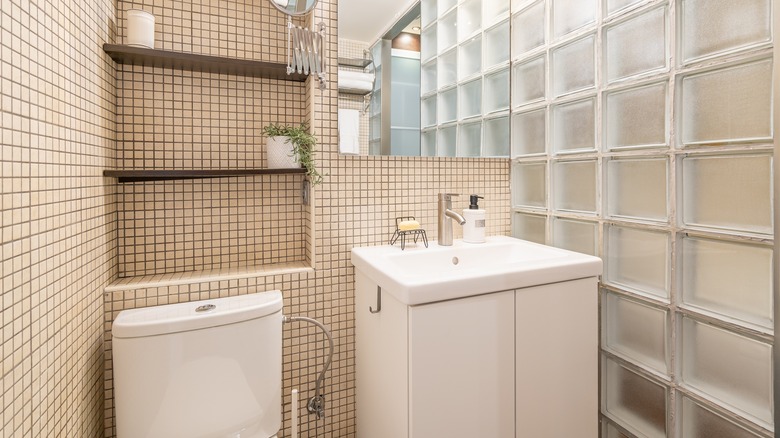One Thing Tourists May Be Thrown Off By When Staying In A Hotel In Europe
First-time travelers to Europe will undoubtedly fall in love with the coveted lifestyle of a European local. Many of Europe's nations are one step ahead of the rest of the world when it comes to elegant boulangeries selling the finest baked goods and efficient transportation systems that crisscross the cityscapes. Combined with breathtaking vistas, cultural richness, and picturesque cobblestone streets, few things in Europe are a struggle to adapt to. However, Americans underestimate one luxury in particular that's hard to secure in most European nations: the splendor of an oversized living space.
Larger living quarters are a prized possession across European nations, influencing both the real estate sector and hospitality industry, creating an increasingly competitive market. While smaller family homes in Europe are easier to go unnoticed, the reduced size of hotel rooms is one that rarely gets missed by international travelers. Everything, from the bedrooms and bathrooms to added amenities, tends to be reduced in Europe. Why is that?
There are many reasons, including the age of the homes in Europe, where most houses are older and passed down via inheritance. Culturally, in contrast to the typical American who spends most of their time working indoors or indulging in the leisure of a large-sized family room, Europeans prefer to be outdoors, socializing with neighbors in the fresh air. Rather than asking, "Where's the rest of my room?", indulge in the culture of your host country and experience the local lifestyle to the fullest!
A pocket-sized lifestyle
Breaking things down to the simplest level, Europeans become accustomed to living in a smaller abode at a young age. It's not just real estate property that was built with a smaller frame in mind — hotel brands maintain an equally smaller square footage. Before checking into your closet-sized room, the first thing you're likely to notice are the miniature elevators squished into the side of the structure. Many older buildings converted into hotels weren't built to support the modern-age luxury of elevators, leaving just enough room to construct a small elevator. Speaking of closet size, the reduced square footage of hotel rooms means less room for the oversized beds in popular hotel chains. Most American hotel brands provide guests with two double beds or a large king-sized bed. In Europe, however, it's not uncommon to have to make do with one double bed or two twin beds that are squished together to form one large bed.
With a smaller space comes fewer amenities. It's rare to come across luxury additional amenities, like ironing boards, hair dryers, or coffee makers, in European boutique hotels. That goes for the bathrooms, as well. While it may be second nature to toss your bath towel onto the bathroom floor and wait for a refresh, you might want to think twice about that in Europe. The leisure of cycling through a hundred bath towels isn't a cultural norm in these nations, as are the plush, oversized bath towels that have become an American staple.
A nation that omits American essentials
While it may not appear so on the surface level, differences in square footage are rooted in cultural customs from hundreds of years ago. Unlike Americans, who tend to get swept up in the fun of living vicariously, Europeans maintain a simple lifestyle that extends to their living quarters. Locals grew accustomed to reduced living spaces, with no immediate desire to expand their homes. Not surprisingly, European travelers are used to the compact layout of hotel rooms. The old-fashioned style of European hotels was built for a different era of traveling — one that didn't include the modern-day luxuries now considered essential among American hotels. While precious space may be compromised, European buildings are incredibly energy efficient. With a smaller area comes a reduced need for heating and cooling to maintain a comfortable temperature — a luxury in a nation where utility costs tend to hover at exorbitant levels.
Components of present-day Europe's hotel industry might stem from centuries-old traditions, but they translate beautifully into a community-oriented lifestyle. The concept of simpler (and smaller) living in Europe means many districts are organized into hyper-local community-centered neighborhoods. According to Marketplace, 77% of European hotels are independent, family-owned businesses, and many were fashioned from obsolete buildings. The historic architecture offers a valuable explanation to travelers wondering why their suitcases can barely fit into their hotel space.


